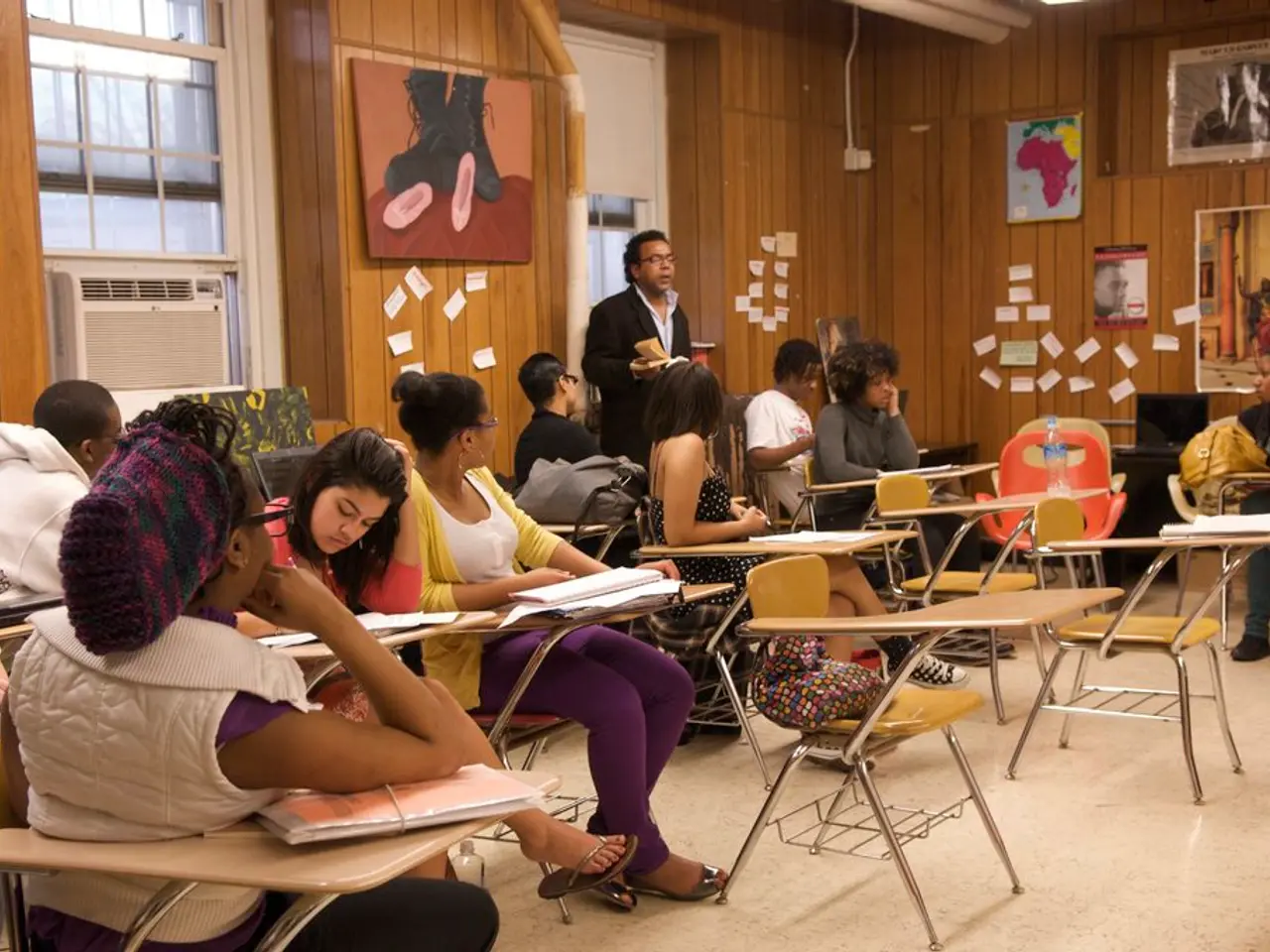Strategies for Established Educators to Embrace and Adapt to Modern Classroom Gadgetry
In the ever-evolving world of education, technology plays an increasingly significant role in teaching and learning. For veteran teachers who may not have had formal instruction or ample opportunities to experiment with edtech tools, navigating this new landscape can be daunting. However, there are strategies that can help them develop their fluency and understanding of new technology tools.
One such strategy is self-exploration. By discovering how technology can streamline routines and improve lesson planning, veteran teachers can shift their mindset from skepticism to seeing technology as a bridge rather than a barrier. This approach allows them to explore various edtech tools, such as Quizizz, with tutorial videos available on platforms like YouTube. For instance, videos like "How to use Quizizz" and "How to use Quizizz to make quizzes and share" can be invaluable resources. It's often helpful to play these videos on a separate screen or alternative device, like a tablet, while setting up the edtech tool on your computer.
Learning from practical examples and user-friendly tech shared by veteran teachers who successfully incorporate simple tech tools in their classrooms can also reduce the learning curve and build confidence. Observing peers and adapting available instructional resources that embed technology thoughtfully allows teachers to respond to student needs in real time.
Seeking out accessible literature or guides based on research and experience demonstrating how digital tools can amplify literacy and instruction, relevant to all teaching levels, is another key strategy. These resources can provide valuable insights into the effective use of edtech tools.
Embracing AI tools for lesson planning and differentiation with curiosity and optimism can further boost technological fluency independently. AI-powered tools can help customize lessons, differentiate instruction, automate administrative tasks, and gain insights into student performance. However, it's essential to maintain a critical, ethical approach to new tech adoption.
School district administration changes often lead to new teaching tools being introduced for teachers. In such cases, connecting with personal networks, other teachers, and technology coaches can be beneficial. Beyond community spaces provided on edtech tool websites, these connections can offer additional support and resources. Community spaces for edtech tools are often found under the resources tab on the tool's website. These spaces can include forums, blogs, challenges, sample lesson plans, tutorial videos, and feedback surveys.
It's important to note that students, despite being digital natives, may not automatically have strong digital literacy skills without prior instruction. Therefore, the integration of technology in teaching practices should always be student-centric, enhancing learning rather than acting as a barrier.
In conclusion, veteran teachers can develop their fluency and understanding of new technology tools without formal instruction by engaging in self-directed exploration, observing technology use modeled by peers or younger colleagues, leveraging thoughtfully designed tech that integrates smoothly with curriculum and workflows, and focusing on technology as a support that enhances their teaching rather than a barrier. These approaches empower teachers to deepen their understanding of new technologies through practical, context-sensitive use, enabling a confident, autonomous integration of technology in their teaching practices.
- For veteran teachers who are unfamiliar with technology tools in education, self-exploration can be a valuable method to help them understand how technology can streamline routines and improve lesson planning.
- Learning from practical examples and user-friendly technology shared by teachers who successfully incorporate technology in their classrooms can help reduce the learning curve and build confidence.
- Seeking out accessible literature or guides based on research and experience demonstrating how digital tools can amplify literacy and instruction at all teaching levels is another important strategy for developing fluency with technology.
- Embracing AI tools for lesson planning and differentiation with curiosity and optimism can further boost technological fluency, but it's essential to maintain a critical, ethical approach to new tech adoption.




